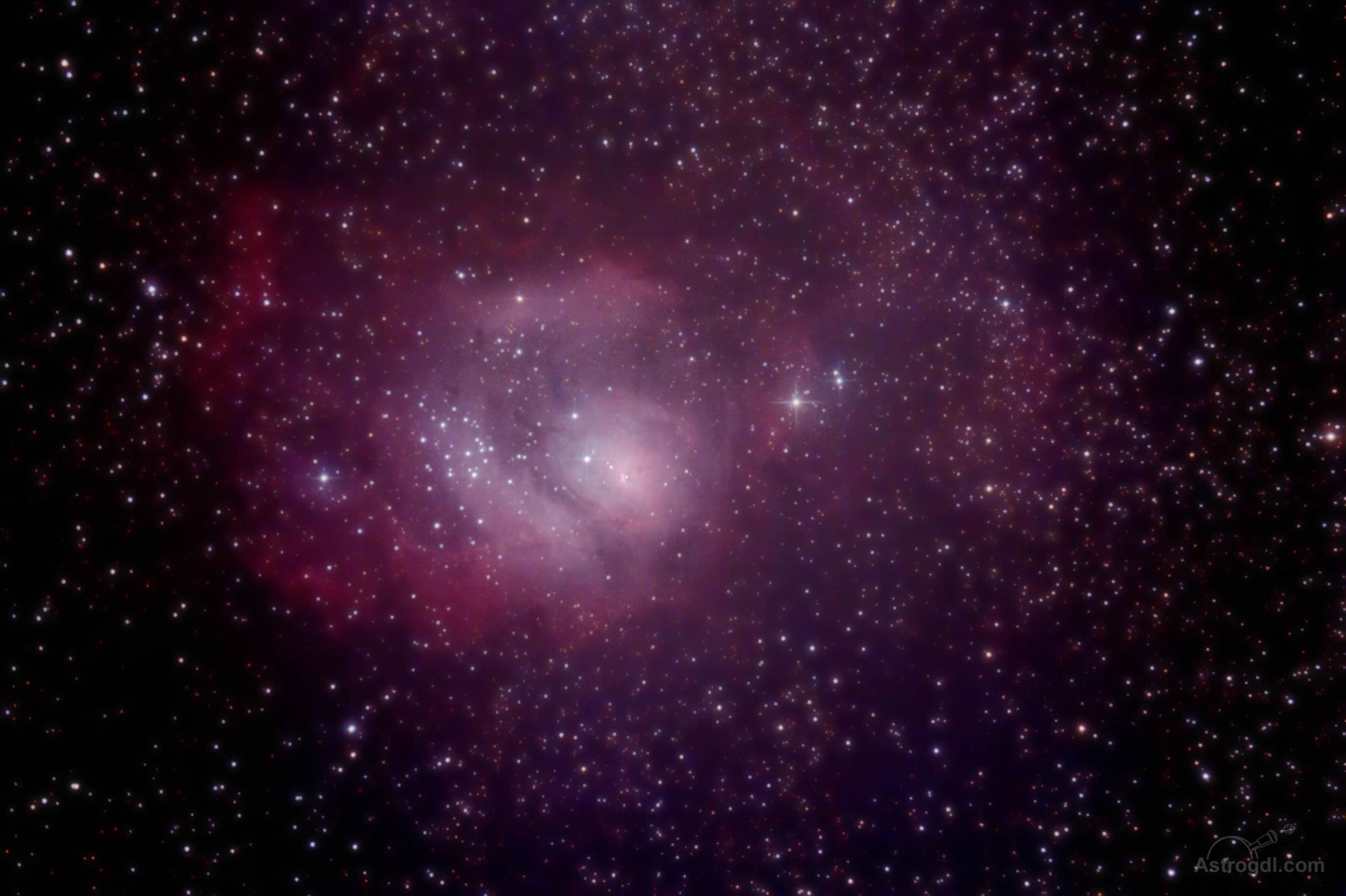
In the summer when the weather is the main enemy and the sky is cleared very rarely and for a few minutes, I decided to save the CGEM mount and the laptop and forget the tedious alignment by drift and tracking. And instead I decided to prepare and have the lightweight Skyviewpro mount (EQ5) ready and take very short exposures.
And on August 3 was the day, I tooked the EQ5, put it the mount in the backyard, I alligned the mount with the compass and in 10 minutes it was ready to do AP and to shoot 5 seconds photos exposures, and this is the result.
IMAGE WITH PI FULL PROCESS (Updated 2018-08-26)
Image Details:
Date: Agust 03 - 2018
Lights 63 x 5 Seg + 30 Darks
Telescope 150/750 Newton
Camera Canon T3i (600D)
ISO 1600
The Lagoon Nebula (catalogued as Messier 8 or M8, NGC 6523, Sharpless 25, RCW 146, and Gum 72) is a giant interstellar cloud in the constellation Sagittarius. It is classified as an emission nebula and as an H II region.
The Lagoon Nebula was discovered by Giovanni Hodierna before 1654 and is one of only two star-forming nebulae faintly visible to the eye from mid-northern latitudes. Seen with binoculars, it appears as a distinct oval cloudlike patch with a definite core. Within the nebula is the open cluster NGC 6530.
The Lagoon Nebula is estimated to be between 4,000-6,000 light-years from the Earth. In the sky of Earth, it spans 90' by 40', which translates to an actual dimension of 110 by 50 light years. Like many nebulas, it appears pink in time-exposure color photos but is gray to the eye peering through binoculars or a telescope, human vision having poor color sensitivity at low light levels.
The nebula contains a number of Bok globules (dark, collapsing clouds of protostellar material), the most prominent of which have been catalogued by E. E. Barnard as B88, B89 and B296. It also includes a funnel-like or tornado-like structure caused by a hot O-type star that emanates ultraviolet light, heating and ionizing gases on the surface of the nebula.
The Lagoon Nebula also contains at its centre a structure known as the Hourglass Nebula (so named by John Herschel), which should not be confused with the better known Hourglass Nebula in the constellation of Musca. In 2006 the first four Herbig–Haro objects were detected within the Hourglass, also including HH 870. This provides the first direct evidence of active star formation by accretion within it.
| Designations | M8, Lagoon Nebula |
| Object Type | Emission nebula and as an H II region |
| Constellation | Sagittarius |
| Apparent Magnitude | +6 |
| Apparent Size (V) | 90 x 40 arc mins |
| Distance | 4100 light years |
| Size | 55 x 20 ly |
| Redshift | |
| Radial velocity |